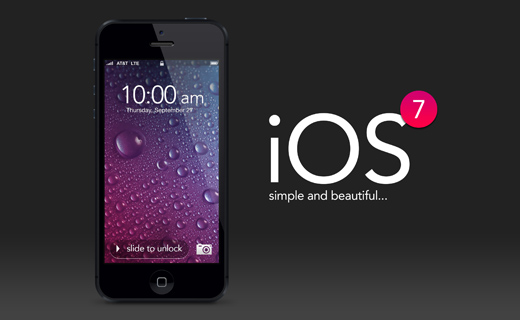
At the 32nd annual edition of the Vancouver International Film Festival, smartphones were more prevalent than had ever been the case, previously, at our Festival, the iPhone seemingly the smartphone of choice.
One could see the occasional Blackberry, a few Android-based Samsung phones were in evidence, but no Windows 8-based Nokia Luminas (actually, a great phone). Yes, it was the Apple iPhone in all of its platinum glory — and version 5, at that — the so-called ‘smartphone for dummies’ (they’re so easy to use, seamless in their operation, VanRamblings employing an iPhone 5 as our means of social communication) that held sway at VIFF.
Social media, and twitter use in particular, was up, way up (how else to discover, in real time, the VIFF winners this past Friday night — a big thank you to the Globe and Mail’s Marsha Lederman), VIFF patrons plugged into the news online prior to the unspooling of VIFF cinematic splendour, text messaged their friends — and moreso than in previous years, kindly observed the instruction of those VIFF staff introducing films to “shut off your smartphones, so as not to disturb your neighbours”). All to the good.
Just prior to the start of VIFF 2013, Apple introduced a near revolutionary change to the iPhone: the introduction of the iOS 7 operating system, a transformation of functionality and process greater than any that has occurred since Apple first introduced the iPhone into the market, in 2007.
Apple has decided to do away with its skeumorphic app design, the “traditional” look employed in the design of Apple’s mobile apps — a design which mimicked “real world” objects — as it moves away from the three-dimensional candy-coated icons with which iPhone / iPad users had become familiar, in favour of flattened icons and a more minimalist design, the “new” flat design of iOS 7 closer to the new industry stand in the mobile market, a style employed by Google on all its Android-based phones.
In fact, the “new” iOS 7 — featuring uncluttered interfaces, and the deliberate use of white space — ought to make use of the iPhone and iPad faster and more intuitive (and more likely than not, prolong battery life). Apple is getting rid of the bloat attendant in the skeumorphic graphical user interface. Of course, a major change of design such as that undertaken in iOS 7 involves something of a learning curve, and an adjustment for users, and as we noticed at the Festival, many iPhone owners were struggling with their adjustment to iOS 7 (whereas, VanRamblings loves the new, almost poetically slippery, Apple operating system).
During the run of the Festival, VanRamblings had promised to publish an introductory column on iOS 7, directing readers towards a few tips, tricks and innovative changes that are incorporated into iOS 7, replete with links galore, a complete explanation on the nature of iOS 7’s innovation.
Today, we’ll go some way to fulfilling that commitment.
19+ Tips, Tricks & Innovations iPhone/iOS 7 Users Ought to Know
As above, in this post we’ll commence our exploration of iOS 7, with the 19+ new and innovative features that will be of most interest to iPhone users. In addition, here’s a link to an article on iOS 7 battery saving tips, and another link on how to resolve petty iOS 7 annoyances. We intend that this article will help iPhone / iPad users ease their adjustment to iOS 7.
1. Disable the activation lock code on iOS7
A built-in security feature, not necessarily new to iOS 7, but definitely more annoying, is the default setting that insists iPhone / iPad users establish a passcode for entry into the Apple device. Most users employ the passcode lock for their iPhones, but if you pretty much use your iPad as a stay-at-home device, with very little or no sensitive information stored on your tablet, you’ll want to disable iOS 7’s activation lock code. Here’s how:
Settings > General > Passcode Lock - Turn Passcode Off
2. Silence Is Golden: Blocking Calls / Texts in iOS 7
Users can now block calls, which is a great way to avoid unwanted contacts. Just go to a contact’s entry and scroll down to the bottom and select “Block this Caller” to block a certain number or contact. Tapping this “button” will prevent the person from being able to call you, send you text messages, or reach you over FaceTime, as well. A handy new innovation.
3. Undelete e-mails
If you accidentally deleted an email, simply shake your phone to undo it.
4. Settings: make iOS 7 easier on the eye
We like the new interface, but it isn’t for everyone. If you have problems with your sight or just want to make iOS 7 more legible, you’ll find some useful settings in Settings > General > Accessibility. You can make all system text bold, increase the size of text in apps that support Apple’s Dynamic Type, scale down motion effects such as the parallax effect, or invert the colours to make iOS 7 look like a 1980s electro-pop album cover.
5. Disabling the Parallax Effect, and Why
Are you, as an iOS 7 user, experiencing vertigo, headaches or nausea while using the recently-launched iOS 7? Surely, most users won’t have a problem with iOS 7’s latest innovation, but reports are already coming in that the new parallax effect in the homescreen (making the background move as if it’s far behind the icons) is making some people experience a similar feeling to having car-sickness.
Although the effect of the moving background is quite cool, there’s no doubt that if it’s going to cause users some discomfort while using their iPhones and iPads, they’d gladly do away with it. And thankfully, there is a way to disable the iOS 7 parallax effect! You just have to follow these simple steps to disable parallax in iOS 7, simply navigate to …
Settings > General > Accessibility, and turn the “Reduce Motion” option on.
One simple setting and you can use iOS 7 Gravol-free!
6. Apps: Automatic Updates
With iOS 7, users can now update apps automatically, a great new functionality for those with a decent data plan. Control this function either way by going to …
Settings > iTunes > App Store, and slide the Updates option under Automatic Downloads.
7. Swipe Down For Search
Gone are the days of having to swipe or tap your way to iOS’ dedicated search page. You can now access Spotlight search from anywhere on the homescreen. Just swipe down in the middle of the screen to quickly search across your device’s apps, e-mails, and contacts — but curiously, it seems that Apple has removed Spotlight’s ability to search the web. We’re pretty sure we never actually used that now missing functional capability, but this is the Internet so we’re supposed to complain now that it’s gone.
8. Siri: now reads your e-mails, and much, much more
Siri makes light work of not only listing e-mails in your inbox, but also reading them out to you. Hold down the Home button and say, “Read my e-mails” and Siri will give you sender, time and date sent, and the subject of each in turn. When asked if you want Siri to read out your mail, just say “Yes”. Or you could simply say, “Siri, read my last three e-mails”, and voilà, that’s what Siri will do.
And, Siri does even more. If you have your hands really full, you can ask Siri to access apps and features in your iDevice such as Settings.
One of the new changes to Siri that came along with a host of technical upgrades is the chance to switch between a male and female voice for your digital assistant. If you’re interested in trying out a different voice behind the same info, go to the Settings app, and then navigate to General > Siri > Voice Gender, and tap on whichever gender you’d prefer.
9. iOS 7’s Control Center: Swipe Up For Toggles
 |
Fixing what is perhaps one of iOS’ most glaring, long-lasting omissions, iOS 7 puts one-click access to things like Airplane mode and Wi-Fi/Bluetooth toggles just one swipe away, instead of hiding them in Settings.
To get to the new Control Panel, just swipe up from the bottom of the screen anywhere you might be. You’ll get buttons for Airplane mode, Wi-Fi, Bluetooth, Do Not Disturb, Orientation lock, and sliders for brightness and media control. Oh, and there’s a readily accessible flashlight — much used in recent days by VanRamblings, as we searched for our cap after the end of VIFF films — available to you, as well. The Control Panel is also accessible from the lockscreen.
10. Flashlight as notification
Go to Settings > General > Accessibility > scroll down and tap “LED Flash for Alerts”.
Continue reading VIFF 2013: Apple’s iOS 7, Transformative New Functionality



